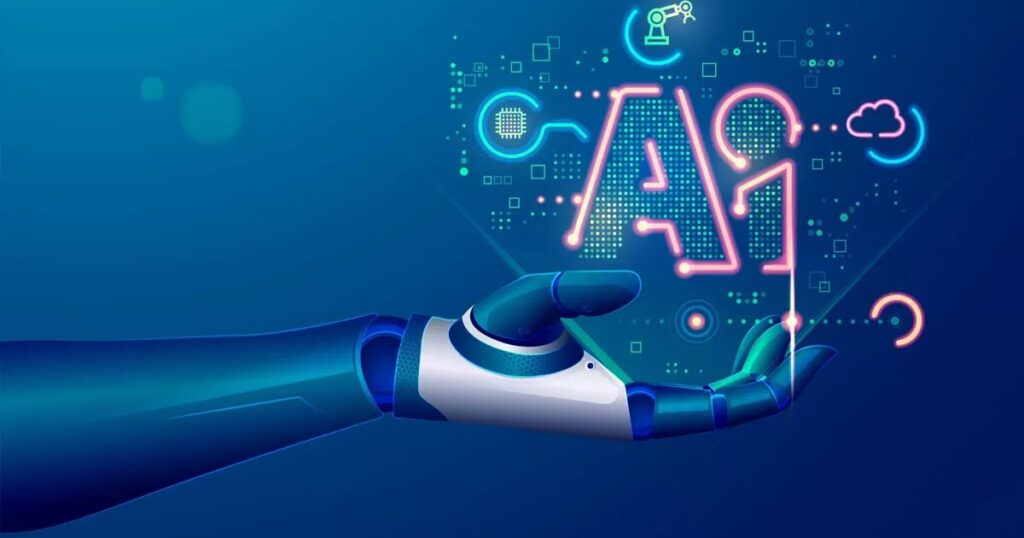Quality Assurance (QA) plays a crucial role in ensuring that Artificial Intelligence (AI) systems are reliable, safe, and effective. As AI systems become more prevalent across various industries, including healthcare, finance, automotive, and retail, it is essential to maintain high standards of quality.
QA helps to verify that these systems perform as expected, handling data accurately and providing reliable outcomes. Let’s dive into how QA contributes to the testing of AI systems and why it is important.
Introduction To QA in AI Testing
The integration of AI into numerous applications has made quality assurance an essential process. Unlike traditional software, AI systems are complex, data-driven, and capable of learning and adapting. This makes their testing quite different and more challenging.
QA ensures that the AI systems are accurate, reliable, and free from bias. It involves a set of systematic activities, including verification, validation, and testing, aimed at maintaining the desired quality throughout the AI development lifecycle.
Why is QA Important in AI?
The role of QA in AI testing is to ensure that AI models function correctly and efficiently. It helps in detecting bugs, data issues, and logical errors, preventing failures that could lead to undesirable outcomes.
The potential risks of flawed AI systems can be serious, ranging from incorrect medical diagnoses to financial miscalculations. QA mitigates these risks by performing thorough testing and quality checks.
Challenges Of QA in AI Testing
The complexity of AI systems brings several challenges to the QA process, including
- Data Variability: AI systems rely on massive amounts of data for training. Ensuring data quality and consistency is a major challenge for QA teams.
- Dynamic Learning: Unlike traditional software, AI models learn and evolve, making it difficult to predict all possible outcomes.
- Bias and Fairness: Ensuring that the AI system does not exhibit any bias or discriminatory behavior is a critical aspect of QA.
- Model Interpretability: Understanding how AI models make decisions can be challenging, making it harder for QA teams to verify their correctness.
Types of Testing in AI QA

Quality Assurance (QA) in AI testing involves a variety of testing methods designed to ensure the AI system operates effectively, efficiently, and without errors.
Due to the unique nature of AI, QA teams need to adopt different testing approaches compared to traditional software systems. Below are the primary types of testing used in AI QA:
Unit Testing
Unit testing focuses on evaluating individual components or units of the AI system. It ensures that each part of the system, such as specific functions, algorithms, or neural network layers, operates as expected. This type of testing helps in identifying bugs at the earliest stage of development.
Example: Testing a single feature extraction algorithm in an image recognition model.
Integration Testing
Integration testing checks whether different modules or components of the AI system work together correctly. It ensures that data flows seamlessly between components and that the integrated system behaves as expected. This is crucial for AI systems that combine multiple algorithms or data sources.
Example: Verifying that a speech-to-text system properly integrates audio processing, language models, and transcription components.
Functional Testing
Functional testing ensures that the AI system’s functionalities meet the specified requirements. It involves testing the system’s outputs against predefined inputs to see if it produces the expected results. This helps in validating that the AI model performs its intended tasks accurately.
Example: Checking if an AI chatbot correctly responds to various user queries.
Regression Testing
Regression testing is used to confirm that any recent changes, updates, or improvements to the AI system do not introduce new issues or affect existing functionalities. It ensures the stability of the AI system as it evolves over time.
Example: Running regression tests on an AI recommendation system to make sure updates to the algorithm do not disrupt previous recommendations.
Performance Testing
Performance testing assesses the AI system’s speed, scalability, and resource usage. It helps to ensure that the system can handle the expected workload without significant delays or performance issues. Performance testing is vital for real-time AI applications that require quick and accurate responses.
Example: Testing the response time of an AI fraud detection system when processing a large volume of transactions.
Security Testing

Security testing checks for vulnerabilities in the AI system that could be exploited by malicious actors. It ensures that the AI system protects sensitive data, prevents unauthorized access, and maintains privacy. This is particularly important for AI applications that handle personal or financial information.
Example: Verifying that an AI-powered facial recognition system securely stores and processes user data.
Exploratory Testing
Exploratory testing involves manually testing the AI system to uncover issues that may not be identified through automated tests. It allows testers to explore different scenarios and identify potential flaws in the AI’s behavior. This type of testing is especially useful for uncovering unexpected or edge-case behavior.
Example: Manually testing an AI system to see how it responds to unusual or ambiguous inputs.
Bias Testing
Bias testing is critical for ensuring that the AI system makes fair and unbiased decisions. QA teams analyze the AI’s outputs across various demographic groups or situations to identify any unintended bias. Addressing bias is essential for maintaining the ethical use of AI.
Example: Checking if an AI hiring tool shows bias against particular groups of candidates.
Adversarial Testing
Adversarial testing involves exposing the AI system to intentionally misleading or challenging inputs to see how it responds. This type of testing helps identify vulnerabilities in the AI model and ensures that it can handle adversarial scenarios gracefully.
Example: Testing an AI image recognition system by slightly altering images to see if it can still accurately identify the objects.
Stress Testing
Stress testing evaluates how the AI system performs under extreme conditions, such as high data loads or rapid input rates. It helps to identify potential breaking points and ensures the system can handle peak loads without crashing.
Verification vs. Validation in AI QA
- Verification: Ensures that the AI system is built correctly. It checks whether the AI model meets the design specifications.
- Validation: Ensures that the right AI system is built. It checks whether the model meets the needs and expectations of the end-user.
Data Quality Assurance

Since AI models rely heavily on data, ensuring data quality is a primary task for QA teams. They need to verify that the data used for training is clean, relevant, and free of bias. Data validation and preprocessing play a vital role in maintaining the quality of the dataset, ensuring that the AI model learns from accurate and representative data.
Testing AI Models for Bias
One of the key roles of QA is to ensure that AI models are free from bias. QA teams perform various tests to identify any unintentional bias in the model’s predictions. This involves analyzing training data, testing outcomes across different scenarios, and ensuring that the model’s decisions are fair and unbiased.
Automation in AI QA
Automated testing can significantly enhance the QA process in AI testing. Automated tools help in:
- Speeding up the testing process: Automation reduces the time required to perform repetitive tasks.
- Improving test coverage: It ensures that a wide range of scenarios and edge cases are tested.
- Ensuring consistency: Automated tests provide consistent results, reducing the chances of human error.
Security Testing in AI
Security is a major concern when it comes to AI systems. QA teams perform security testing to ensure that the AI model does not expose any vulnerabilities that could be exploited by attackers. This involves testing for data breaches, unauthorized access, and other security risks.
Performance Testing For AI Models
QA teams also perform performance testing to ensure that the AI model operates efficiently under various conditions. This involves testing the model’s response time, throughput, and scalability. Performance testing ensures that the AI system can handle real-world scenarios without any issues.
Continuous Monitoring And Testing
QA in AI is not a one-time task. Continuous monitoring and testing are essential to ensure that the AI system continues to perform well over time. This is especially important for AI models that learn and adapt, as their behavior can change based on new data.
Role Of Explainability in AI QA
Understanding how AI models make decisions is crucial for effective QA. Explainability helps QA teams to verify that the AI model is making decisions based on the right factors. It also helps in identifying any potential issues or biases in the model’s decision-making process.
Regression Testing in AI
Regression testing ensures that any updates or modifications to the AI system do not introduce new bugs or issues. This is crucial for maintaining the reliability of the AI system over time.
QA teams perform regression tests to validate that existing functionalities remain intact even after changes.
Scalability Testing in AI
Scalability testing helps in determining whether the AI system can handle increasing workloads without degrading performance. This is essential for AI applications that are expected to scale up in real-world scenarios.
Real-World Testing

QA teams often perform real-world testing to simulate the actual environment where the AI system will be deployed.
This helps in identifying any unexpected issues that might arise during real-world operations. Real-world testing ensures that the AI system can handle real-life situations effectively.
The Future Of QA in AI Testing
The role of QA in AI testing is expected to grow as AI systems become more complex and integrated into our daily lives.
With advancements in machine learning and AI technologies, QA processes will need to adapt to ensure the continued reliability and safety of AI systems.
Frequently Asked Questions
What is the role of QA in AI testing?
The role of QA in AI testing is to ensure that AI models function correctly and efficiently. It helps in detecting bugs, data issues, and logical errors, preventing failures that could lead to undesirable outcomes.
How is data quality ensured in AI testing?
Data quality in AI testing is ensured through data validation and preprocessing. QA teams verify that the data used for training is clean, relevant, and free of bias.
Why is testing for bias important in AI?
Testing for bias is important to ensure that AI models make fair and unbiased decisions. It helps in identifying any unintentional bias in the model’s predictions.
What are the challenges of QA in AI?
The challenges of QA in AI include data variability, dynamic learning, bias and fairness, and model interpretability. These factors make it difficult to predict all possible outcomes of the AI system.
Conclusion
Quality Assurance is an essential part of AI development that ensures the reliability, security, and efficiency of AI systems. It involves a range of testing processes, from verifying data quality to ensuring the model’s performance under different conditions. As AI systems continue to evolve, the role of QA will become even more critical in maintaining trust and safety.










